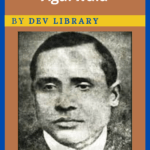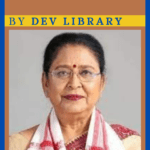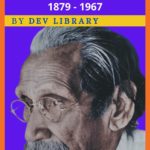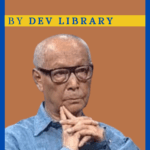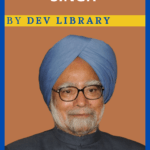Nagarjun, who occupied a special place in Hindi literature, was a great poet and famous writer of progressive ideals. Nagarjun’s real name was Vaidyanath Mishra, who was addressed by his loved ones as Nagarjun and Janakavi.
In Hindi literature, he edited great works like “Yatri” and “Nagarjun” in the Maithili language. Nagarjun was a poet of Hindi and Maithili who instilled new energy in people through his works and spread public consciousness.
Mahakavi Nagarjun has emotionally expressed the pain of the common man with great simplicity in his work, and he has expressed his views on politics. Let us tell you that Nagarjun deeply understands the problems of farmers and the working class and extends emotional condolences to them through his works.

Biography of Nagarjun
| Name | Nagarjun[1] |
| Real Name | Vaidyanath Mishra |
| Date of Birth | June 30, 1911 |
| Place of Birth | Madhubani, Bihar |
| Father’s Name | Gokul Mishra |
| mother’s Name | Uma Devi |
| Spouse | Aparajita Devi |
| Occupation | Poet, Writer, Novelist |
| Death | November 5, 1998, Darbhanga, Bihar |
Early Life and Education of Nagarjun
Vaidyanath Mishra (Nagarjun) was born on 30 June 1911, in a middle-class Brahmin family in the village of Tarauni in Darbhanga District of Bihar, India. He spent most of his days in his mother’s village Satlakha of Madhubani district, Bihar. He later converted to Buddhism and got the name “Nagarjun”. His mother died when he was only three, and his father being a vagabond himself, couldn’t support him so young Vaidyanath thrived on the support of his relatives, and the scholarship he won on the account of his being an exceptional student. Soon he became proficient in Sanskrit, Pali, and Prakrit languages, which he first learned locally and later at Varanasi and Calcutta, where he was also semi-employed while pursuing his studies. Nagarjuna had a good knowledge of Sanskrit, Maithili, Hindi, Pali, etc. since its inception, he has expressed his great ideals in his work very easily and with simplicity. He was a scholar of Hindi literature, he wrote ‘Nagarjun’ and ‘Traveller’ in Maithili, so his fans called him nicknames like Nagarjun and Yatri. Meanwhile, he married Aparajita Devi and the couple had six children.
Also Read: Biography of Munshi Premchand
Career of Nagarjun
He started his literary career with Maithili poems by the pen name of Yatri in the early 1930s. By the mid-1930s, he started writing poetry in Hindi. His first permanent job as a full-time teacher, took him to Saharanpur (Uttar Pradesh), though he didn’t stay there for long as his urge to delve deeper into Buddhist scriptures, took him to the Buddhist monastery at Kelaniya, Sri Lanka, where in 1935, he became a Buddhist monk, entered the monastery and studied the scriptures, just as his mentor, Rahul Sankrityayan had done earlier, and hence took upon the name “Nagarjun”. While at the monastery he also studied Leninism and Marxism ideologies, before returning to India in 1938 to join the ‘Summer School of Politics’ organized by noted peasant leader, Sahajananad Saraswati, founder of Kisan Sabha. A wanderer by nature, Nagarjun spent a considerable amount of his time in the 1930s and the 1940s traveling across India.
He also participated in many mass awakening movements before and after independence. Between 1939 and 1942, he was jailed by a British court for leading the farmers’ movement in Bihar. He was involved in journalism for a long time after independence.
He played an active role in Jayaprakash Narayan’s movement prior to the Emergency period (1975-1977) and therefore was jailed for eleven months, during the emergency period. He was strongly influenced by Leninist-Marxist ideology. This was one of the reasons that he never found patronage from the mainstream political establishments.
Poetic features of Nagarjun
The poetic features of the great poet of literature Nagarjun are:
Mahakavi Nagarjun has written in both Hindi and Maithili, His simple and intuitive language style keeps readers fascinated with his works from beginning to end. Nagarjun, the great poet of progressive ideals, has used metaphors, analogies, exaggerations, and fragrances in his works in a very bright way. Poet Nagarjun has also taken a satire on the government and society through his works. The subject of his poetry is varied. The effects of both his wandering tendencies and activism are evident in his middle and later works. He often wrote on contemporary social and political issues. His famous poem Mantra Kavita is widely considered the most accurate reflection of a whole generation’s mindset in India.
Besides these accepted subjects of poetry, Nagarjun found poetic beauty in unconventional subjects. One of his most astonishing works is a poem based on a show called ‘With Sharp Teeth’.
Because of the breadth of his poetry, Nagarjun is considered the only Hindi poet after Tulsidas to have an audience ranging from the rural sections of society to the elite. He effectively freed poetry from the bounds of elitism.
Language
Maithili was his mother tongue and he authored many poems, essays, and novels in Maithili. He was educated in Sanskrit, Pali, and Hindi. Hindi remained the language of the bulk of his literature. The Hindi of his works varies from highly Sanskritized to vernacular forms. He was a poet of the masses and preferred to write in the language of immediate local impact. Therefore, he never adhered to specific bounds of languages.
He also had a good grasp of the Bengali language and used to write for Bengali newspapers. He was close to the Bengali Hunry generation or Bhookhi Prrehi poets and helped Kanchan Kumari in translating Malay Roy Choudhury’s long poem Jakham and Chana Jor Garam in Hindi.
Literary works
Poetry
‘Yugdharo’, ‘Kal aur Aaaj’, ‘Satrange Pankhon Wali’, ‘Talab Ki Machhliyan’, ‘Tumne Kahan Tha’, ‘Purani Juliyon Ka Coras’, ‘Khichiri Viplava Dekha Humne’, ‘Aise bhi hum Kya’ etc.
Novels
‘Rati Nath Ki Chachi’, ‘Balachnama’, ‘Baba Bateshar Nath’, ‘Himalaya Ki Betiyan’, ‘Nai Paudh’, ‘Varun ke Bete’, ‘Dukh Mochan’, ‘Ugratara’, ‘Kumbhi Pak’, ‘Abhinandan’, ‘Imaratia’, etc.
Essay collections
‘Ant Hinam Kriyanam’, ‘Bum Bholenath’, ‘Ayodhya Ka Raja’.
Maithili works
Patrahin Nagna Gachh (collection of poems), Chitra (collection of poems), Pparo (novel), Navturiya (novel), Balchnma (novel)
Works of Baba Nagarjun
Poet Kumar Vishwas and channel ABP News aired a video documentary about the life and writings of Nagarjuna in their Mahakavi Series
Death
In 1948, Nagarjun was first attacked with asthma. As a result, his health deteriorated day by day. This is why Baba Nagarjunji, the leading poet of progressive ideology, died on November 5, 1998, at the age of 87 in Darbhanga district, Bihar.
FAQ
1. When and where was poet Nagarjun born?
Ans: Poet Nagarjun was born on June 30, 1911, in a middle-class Brahmin family in Satlakha, a small village in Madhubani district of Bihar.
2. What is the real name of Nagarjun?
Ans: Vaidyanath Mishra
3. What is the name of the father and mother of poet Nagarjun?
Ans: Poet Nagarjun’s father and mother are – Gokul Mishra and Uma Devi.
4. What is the name of poet Nagarjun’s wife?
Ans: Poet Nagarjuna’s wife’s name is Aparajita Devi.
5. When and where did Nagarjun die?
Ans: In 1948, Nagarjun was first attacked with asthma. As a result, his health deteriorated day by day. This is why Baba Nagarjunji, the leading poet of progressive ideology, died on November 5, 1998, in Darbhanga district, Bihar.

Hi, I’m Dev Kirtonia, Founder & CEO of Dev Library. A website that provides all SCERT, NCERT 3 to 12, and BA, B.com, B.Sc, and Computer Science with Post Graduate Notes & Suggestions, Novel, eBooks, Biography, Quotes, Study Materials, and more.


